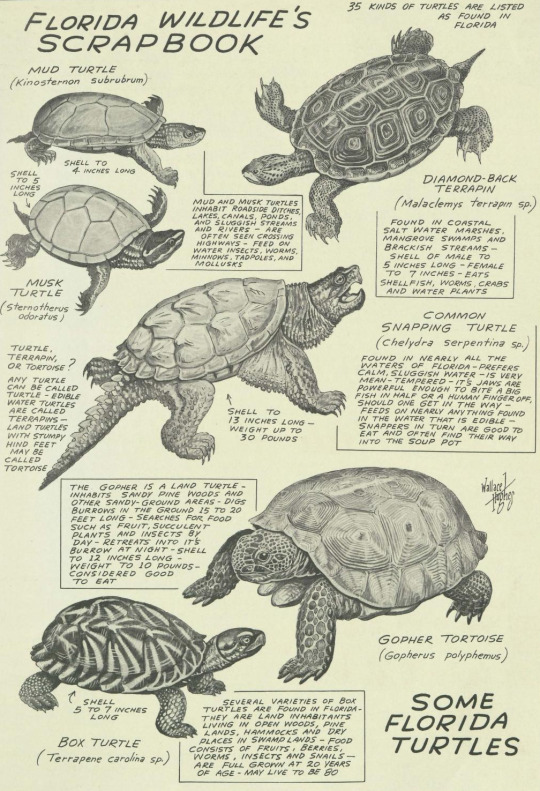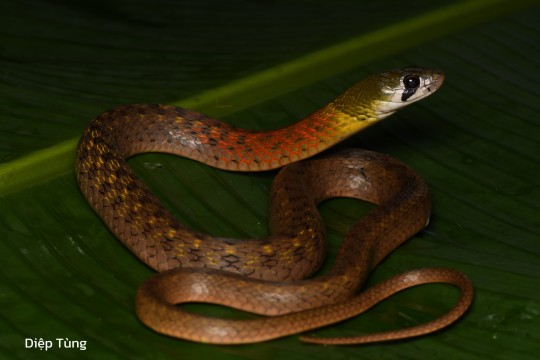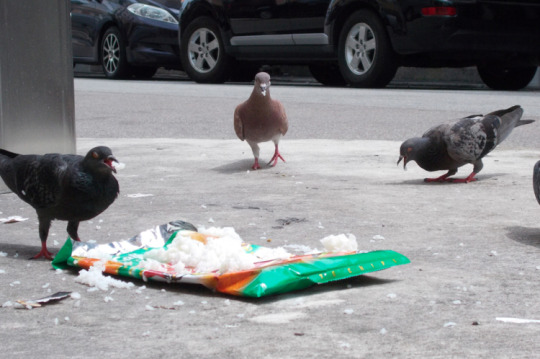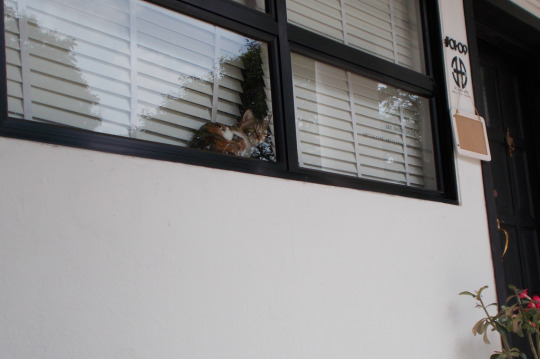here be animalia. I don't like any kind of selective breeding or vegetables. Some appear anyway.
Don't wanna be here? Send us removal request.
Text

Florida Wildlife; vol. 12, no. 4. September, 1958. Illustration by Wallace Hughes.
Internet Archive
386 notes
·
View notes
Text


Giant Bronze Gecko (Ailuronyx trachygaster), family Gekkonidae, found in the canopy of the few remaining and endangered Coco de Mer palms on 2 tiny locations in the Seychelles Islands
CRITICALLY ENDANGERED.
Growing up to 30 cm in total length, this is one of the largest gecko species in the world.
photographs: Reptiles4all & Michael Bakker Paiva
497 notes
·
View notes
Text




Siamese Red-Necked Keelback (Rhabdophis siamensis), family Colubridae, Viet Nam
Mildly to moderately venomous.
Venom is excreted into the saliva, and enters the prey through the bite wound. Keelbacks do not have fangs.
This species is also poisonous! They sequester toxins from the toads they prey on.
photograph by Diệp Tùng
510 notes
·
View notes
Text
7K notes
·
View notes
Photo










Video: Grizzler the Border Collie is the World’s First Canine Photographer
1M notes
·
View notes
Text

horse standing in a man made pool of vibrant turquoise water this horse looks as if it has gotten itself in a situation as the water reaches the beginnings of its chest with no stairs or other manner of exit in sight perhaps being in a pool with no easy manner of removal was the horses plan all along for as the summer days grow hotter in the northern hemisphere one of the best ways to cool off is to immerse oneself in the closest available body of water this horse is clever as by finding a pool with no horse accessible exit in sight it will take much longer for its human caretakers to remove it allowing the horse to spend even more time avoiding the summer heat the dastardly horse faces the camera shamelessly knowing its scheme has succeeded
683 notes
·
View notes
Text
I frequently lose my mind over the australian lungfish because look…




that is cats. That is kitty cats. Look at their faces… “:3”
5K notes
·
View notes
Text




Here, have some fluff for the start of the weekend - black-headed gull with their fluffy chicks.
88 notes
·
View notes
Text


wuh. who's there

what the fuck
(Hadroplontus sp., April 2nd, 2025)
115 notes
·
View notes
Text

Scarlet macaw By: Academy of Natural Sciences From: Getting to Know Nature's Children: Parrots 1989
462 notes
·
View notes
Note
hello ! what are some of the most beautiful mostly-brown birds you know of ? bright colors are fun and all, but brown can be just as beautiful. ^_^
Brown Birds
Oh, that's an easy one! Here, have a look...



Limpkin (Aramus guarauna), family Aramidae, order Gruiformes, Florida, USA
Limpkins specialize in eating large aquatic snails, like apple snails.
photos: Thomas Conroy, VJAnderson, pedro lastra

Scaly-breasted Cupwing or Scaly-breasted Wren-Babbler (Pnoepyga albiventer), family Pnoepygidae, order Passeriformes, Mandal, Uttarakhand, India
photograph by Sachin Pawar

White-eared Jacamar (Galbalcyrhynchus leucotis), family Galbulidae, order Piciformes, Reserva Biológica Limoncocha, Sucumbíos, Ecuador
photograph by Jorge Vera

Scaly-breasted Woodpecker (Celeus undatus grammicus), female, family Picidae, Manacapuru, Amazonas state, Brazil
This is a subspecies of the Scale-breasted Woodpecker.
photograph by Hector Bottai

Equatorial Antpitta (Grallaria saturata), family Grallariidae, order Passeriformes, Ecuador
Was considered to be a subspecies of the Rufous Antpitta, Grallaria rufula, but was split off in 2020. The Rufous Antpitta has now been separated into 13 different species.
photograph via: Sam, Tropical Birding Tours

Hamerkop (Scopus umbretta), family Scopidae, order Pelicaniformes, Queen Elizabeth National Park, Uganda
The taxonomic affinities of this bird have been greatly debated over the year, and now is believed to be in the Pelecaniformes.
This is the only bird in this family.
photograph by Charles J. Sharp
358 notes
·
View notes
Text

A lobster. Filmed in Denmark. From Sea in Motion - Baltic Miracles (2023).
225 notes
·
View notes
Text

Jocotoco Antpitta (Grallaria ridgelyi), family Grallariidae, order Passeriformes, Jocotoco Wildlife Sanctuary, Ecuador
ENDANGERED.
Has a very small range, known from only a few locations in Ecuador and Peru.
photograph by Supreet Sahoo
425 notes
·
View notes
Text

Rufous-bellied Heron (Ardeola rufiventris), family Ardeidae, order Pelicaniformes, Uganda
photograph by Mark Watts
397 notes
·
View notes

